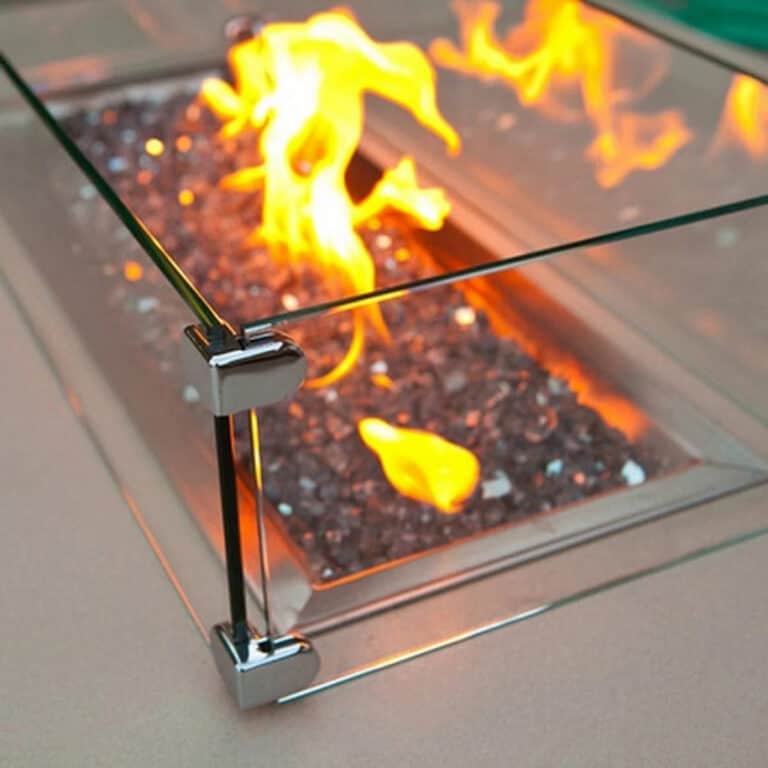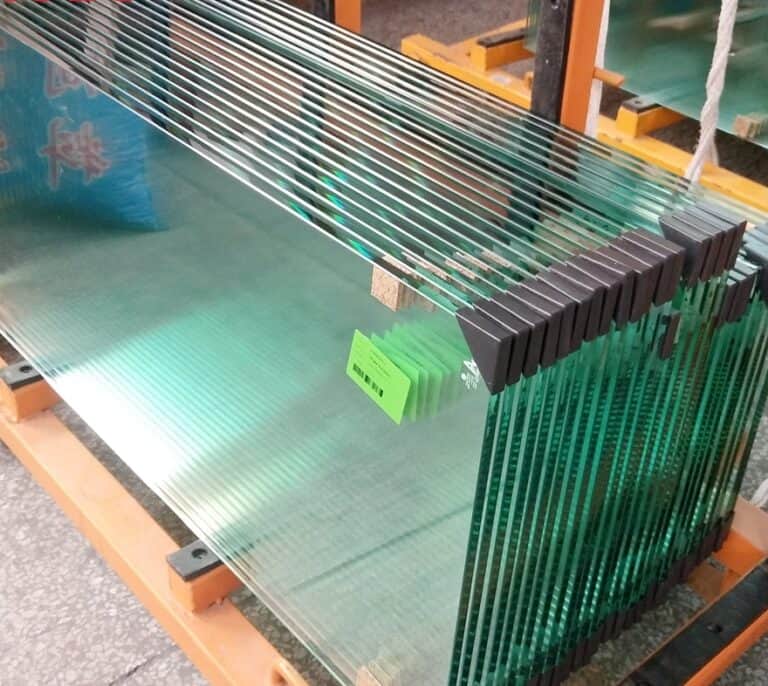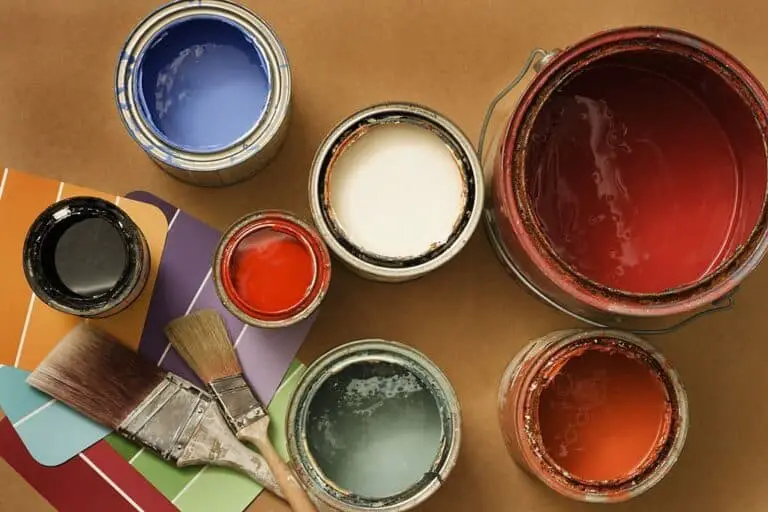How To Remove Oil Based Paint From Glass Without Damaging It (Easy Guide)

Oil based paint is a popular choice for a wide range of DIY projects. Oil-based paint can be tricky to remove from glass surfaces. If you’ve ever accidentally gotten oil-based paint on a glass window or mirror, you know that it can be a real headache to remove.
Whether you accidentally spilled paint on a window or need to remove old paint from a glass object, there are several methods that can be used to safely and effectively remove oil based paint from glass.
In this article, we’ll walk you through the steps involved in removing oil based paint from glass surfaces, including tips and precautions to ensure that the process is safe and effective. We’ll explore some of the most effective techniques for removing oil-based paint from glass, as well as some safety precautions that you should keep in mind.
Understanding Oil Based Paint
Oil-based paint, also known as alkyd paint, is a type of paint that uses oils, usually linseed oil, as its base. It is typically used on surfaces that require a durable and long-lasting finish, such as wood, metal, or glass.
Oil based paint is known for its ability to dry slowly, allowing for a smooth and even finish. This type of paint also tends to be more resistant to wear and tear, making it a popular choice for high traffic areas or outdoor projects.
Oil-based paint can be particularly challenging to remove from glass surfaces because it can adhere strongly and create a durable bond. If left untreated, it can dry and harden, making it even more difficult to remove.
Fortunately, there are several effective methods for removing oil-based paint from glass that can help restore the surface to its original condition.
It is important to note that oil-based paint contains chemicals that can be harmful if ingested or inhaled. Proper safety precautions should be taken when working with oil-based paint, including wearing gloves, safety glasses, and working in a well-ventilated area.
In addition to being difficult to remove from glass, oil-based paint can also create a mess during the painting process. It can be challenging to avoid drips and spills, especially on vertical surfaces like windows. It’s important to take appropriate steps to protect surrounding surfaces and avoid creating a larger cleanup task later on. Using painter’s tape to mask off areas around the glass can help prevent accidental spills and drips.
Why It is Difficult to Remove Oil Based Paint From Glass?
Oil based paint is known for its durability and long-lasting finish, which is why it’s often used on surfaces that require a tough coating. When oil based paint is applied to glass surfaces, the solvents in the paint can make it adhere tightly to the glass, making it difficult to remove.
However, when it comes to removing oil based paint from glass surfaces, it can be quite challenging. There are several reasons why this is the case.
- The solvents in oil based paint can cause it to bond tightly to the glass surface, making it difficult to remove. These solvents are used to keep the paint in a liquid state, which allows it to be applied smoothly and evenly. However, they can also cause the paint to adhere tightly to the glass, making it resistant to removal.
- Oil based paint tends to dry slowly, which means that it has more time to bond with the glass surface. This can make it even more difficult to remove, as the paint has had more time to harden and become firmly attached to the glass.
- Oil based paint is often used on surfaces that are exposed to harsh conditions, such as outdoor surfaces or high-traffic areas. This means that it is designed to be durable and resistant to wear and tear, which can make it even more challenging to remove from glass surfaces.
- Finally, the tools and techniques used to remove oil based paint from glass can also impact the difficulty of the process. Using abrasive materials or harsh chemicals can damage the glass surface or cause scratches, which can make it even harder to remove the paint.
Safety Precautions and Preparing the Work Area
Before you start removing oil-based paint from glass, it’s important to take some safety precautions to protect yourself and your surroundings. Here are some tips to keep in mind:
- Wear gloves and safety glasses to protect your skin and eyes from the paint and any cleaning agents that you may be using.
- Work in a well-ventilated area to avoid inhaling any fumes or vapors from the paint or cleaning agents.
- Keep any flammable materials, such as solvents or rags soaked in solvents, away from heat sources and open flames to avoid fire hazards.
- By taking these safety precautions, you can minimize the risk of injury or damage while removing oil-based paint from glass.
Choosing the Right Tools and Materials
When it comes to removing oil based paint from glass, choosing the right tools and materials is essential. There are several types of paint removers that can be used on glass, including acetone, mineral spirits, and vinegar.
Acetone is a strong solvent that is highly effective at breaking down oil based paint, but it can also be harsh on some types of glass. Mineral spirits are a milder alternative that can be used on most types of glass, but they may take longer to work. Vinegar is a natural alternative that is safe to use on most types of glass, but it may not be as effective as other paint removers.
How To Remove Oil Based Paint From Glass
Method 1: Using Mineral Spirits
Mineral spirits, also known as paint thinner, is a solvent that can be effective in removing oil-based paint stains from glass. Here’s how to use mineral spirits to remove oil-based paint from glass:
- Wear gloves and safety glasses to protect your skin and eyes.
- Dip a clean cloth or rag into some mineral spirits.
- Gently rub the cloth over the oil-based paint stain on the glass, applying moderate pressure.
- Keep rubbing until the paint begins to dissolve and lift off the glass surface.
- Use a clean cloth or paper towel to wipe away the dissolved paint and any excess mineral spirits.
- Repeat the process as needed until the paint stain is completely removed.
Be sure to dispose of any rags or cloths that are soaked in mineral spirits in a safe manner, as they can be flammable and pose a fire hazard.
Method 2: Using Acetone
Acetone is another solvent that can be effective in removing oil-based paint from glass. However, like mineral spirits, it is highly flammable and requires careful handling and safety precautions. Here’s how to use acetone to remove oil-based paint from glass:
- Wear gloves and safety glasses to protect your skin and eyes.
- Dampen a clean cloth or rag with acetone.
- Gently rub the cloth over the oil-based paint stain on the glass, applying moderate pressure.
- Keep rubbing until the paint begins to dissolve and lift off the glass surface.
- Use a clean cloth or paper towel to wipe away the dissolved paint and any excess acetone.
- Repeat the process as needed until the paint stain is completely removed.
Be sure to work in a well-ventilated area when using acetone, and keep any rags or cloths that are soaked in acetone away from heat sources and open flames.
Method 3: Using Vinegar
If you prefer a more natural approach to removing oil-based paint from glass, vinegar can be an effective option. Here’s how to use vinegar to remove oil-based paint from glass:
- Combine equal parts white vinegar and water in a spray bottle.
- Spray the solution onto the oil-based paint stain on the glass.
- Let the solution sit on the stain for several minutes.
- Use a clean cloth or paper towel to wipe away the dissolved paint and any excess vinegar solution.
- Repeat the process as needed until the paint stain is completely removed.
Vinegar is non-toxic and safe to use, but it may take longer to dissolve the paint than solvents like mineral spirits or acetone. You may need to repeat the process several times to completely remove the paint.
Method 4: Using Razor Blade
If the oil-based paint has dried on the glass surface, using a razor blade can be an effective way to remove it. Here’s how to remove dried oil-based paint from glass using a razor blade:
- Wear gloves and safety glasses to protect your skin and eyes.
- Hold the razor blade at a 45-degree angle to the glass surface.
- Use the razor blade to gently scrape away the dried paint, starting from the edges and working your way toward the center.
- Keep the razor blade flush against the glass surface to avoid scratching or damaging it.
- Wipe away any paint residue with a clean cloth or paper towel.
Using a razor blade to remove dried paint from glass can be effective, but it requires a steady hand and careful attention to avoid damaging the glass surface.
Conclusion
Removing oil-based paint from glass can be a challenging task, but it’s not impossible. By using the right techniques and taking appropriate safety precautions, you can get rid of those pesky paint stains and restore the glass surface to its original condition.
Whether you choose to use solvents like mineral spirits or acetone, natural solutions like vinegar, or a razor blade, be sure to work carefully and methodically to avoid damaging the glass surface. With a little patience and persistence, you can successfully remove oil-based paint from glass and enjoy a clean, clear surface once again.





